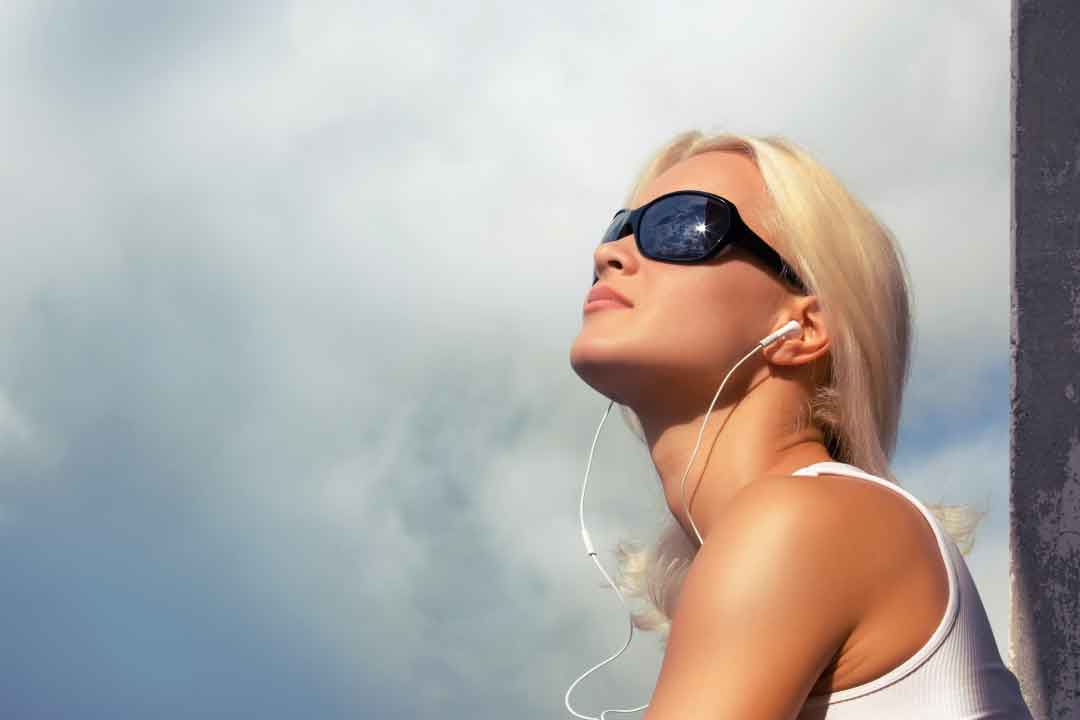
Photokeratitis - sun damage to the eyes
We all know the message to "slip, slop and slap" to protect our skin from the sun, but how much do you know about sunburn and your eyes? In this blog post our head office team discusses a condition called photokeratitis.
It may surprise you to learn our eyes can get sunburned.
We should all know by now how important it is to apply sunscreen to protect our skin from the harsh and damaging effects of the sun’s Ultraviolet (UV) rays.
It is a message that is drummed into Australians every summer.
Australia has the highest rate of skin cancer in the world, with the age-standardised mortality rate expected to soon reach 4.0 deaths per 100,000 persons (5.6 for males and 2.6 for females).
Whilst we know to slop on sunscreen and slip on a hat, we often don’t think about how important it is to protect our eyes from sunburn as well.
Yes, our eyes can get sunburnt.
When our eyes get sunburned, it is called ‘photokeratitis.’ It happens when the thin surface layer of the clear front of our eye (called the ‘cornea’) is damaged by the harsh UV light from the sun.
The surface layer of your eye is made up of thousands of nerve endings. It is extremely sensitive and can easily be damaged. When too much UV light hits this layer, it becomes inflamed and irritated, which causes sensations of burning or itching. This is photokeratitis.
Symptoms of photokeratitis
Just like when your skin is sunburned, usually, by the time you notice you have symptoms of photokeratitis, the damage has already been done.
Often, people don’t even notice the signs of eye damage from the sun until several hours after it is too late.
Symptoms of photokeratitis include…
- Redness or pain in the eyes
- Light sensitivity
- Gritty sensation in the eyes – like you have sand in your eyes
- Watery eyes
- Swollen eyelids
The good news is that short-term photokeratitis is temporary and usually goes away within a few hours.
Treatment of photokeratitis
If you are experiencing symptoms of short-term photokeratitis, the best place to be is indoors.
Your focus should be on making yourself as comfortable as possible while allowing time for the eyes to heal.
If you are a contact lens wearer, remove them. Place a moistened cloth over your closed eyes to relieve discomfort. Resist the urge to rub your eyes, as it will only further irritate them and slow down the healing process.
If your photokeratitis symptoms persist for longer than a day, contact an Eyecare Plus optometrist.
Prevention of photokeratitis
Sunglasses are your best protection against exposure to UV light.
When the Cancer Council of Australia introduced its ‘Slip Slop Slap’ campaign in 1981, millions of Australians heeded the advice of ‘Sid the Seagull’ and slipped on a shirt, slopped on sunscreen and slapped on a hat to reduce the risk of sunburn and skin cancer.
In 2007, the Cancer Council updated the slogan to ‘Slip Slop Slap Seek Slide.’ Now Sid encourages us to seek shade and slide on our sunglasses too. This is great advice, especially for children, whose delicate eyes and skin are more susceptible to UV damage.
Remember: UV prevention starts when you and your children are leaving the house. Put on UV-blocking sunglasses and a hat before you walk out the door. The longer your eyes are exposed to UV light, the more severe the eye sunburn symptoms will be.
Yes, your eyes can get sunburned in winter!
Unfortunately, as winter approaches, many of the safe sun habits people practice over summer start to drop away. And while UV rays are the strongest during the summer, they can damage your eyes throughout the year.
It is important to remember that even on overcast days in winter, UV is still present. To be safe, follow the Australian Cancer Council’s advice: ‘Think UV, not Heat.’ It is a very good and powerful message.
Sunglasses: Buy the Australian standard
The safety standards for Australian-made sunglasses, which are higher than international standards, were set to ensure that all Australians have access to adequate protection against the damage UV light can do to our eyes.
All sunglasses sold by Eyecare Plus optometry practices nationwide are guaranteed to comply with the latest Australian safety requirements for sunglasses.
Speak with us about the frames you are considering ensuring they are adequate for the activities you are involved in (volleyball, skiing, long-distance running, reading at the beach, etc.).
What is the UV index?
Australia experiences some of the highest UV levels in the world. You can see the sun’s light and feel its heat, but you can’t see or feel UV radiation. Because of that, the World Health Organization invented the UV index to provide people with a daily UV forecast and help them decide how much time to spend in the sun and what protection to use.
The UV index predicts UV risk on a scale from 0 (minimal risk) to 11+ (very high risk). Basically, the higher the UV index, the greater the risk of sunburn and photokeratitis. The UV index used throughout Australia conforms with the World Health Organization’s guidelines.
The daily UV index in Australia is a part of most weather forecasts, or you can find more details about the daily UV index through:
- The Australian Radiation Protection and Nuclear Safety Agency ultraviolet radiation index.
- The Cancer Council of Australia MyUV website.
- The Bureau of Meteorology UV and sun protection times.
In general, when the UV index for your area is above 3, sun protection measures (‘slip, slop, slap, seek and slide) are recommended.
If you have questions about sun damage to the eyes, contact us for an appointment.
Ready to book an appointment?
Online bookings available or call us on (07) 3463 0349.
This website does not provide medical advice. It is intended for informational purposes only. It is not a substitute for professional medical advice, diagnosis or treatment. Never ignore professional medical advice in seeking treatment. If you think you may have a medical emergency, immediately dial Triple 0 (000).

